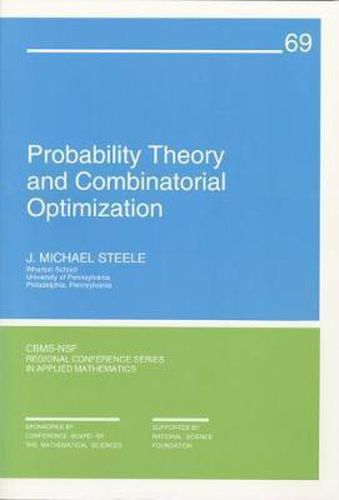Readings Newsletter
Become a Readings Member to make your shopping experience even easier.
Sign in or sign up for free!
You’re not far away from qualifying for FREE standard shipping within Australia
You’ve qualified for FREE standard shipping within Australia
The cart is loading…






This monograph provides an introduction to the state of the art of the probability theory that is most directly applicable to combinatorial optimization. Much attention is paid to those questions dealing with discrete optimization problems for points in Euclidean space, such as the minimum spanning tree, the travelling-salesman tour and minimal-length matchings. Still, there are several nongeometric optimization problems that receive full treatment, and these include the problems of the longest common subsequence and the longest increasing subsequence. There are three fundamental probabilistic themes that are examined through our concrete investigations. First, there is a systematic exploration of martingales. Many investigators of problems of combinatorial optimization have come to count on martingale inequalities as versatile tools which let us show that many of the naturally occurring random variables of combinatorial optimization are sharply concentrated about their means - a phenomenon with numerous practical and theoretical consequences. The second theme that is explored is the systematic use of subadditivity of several flavours, ranging from the naive subadditivity of real sequences to the subtler subadditivity of stochastic processes. By and large, subadditivity offers only elementary tools, but on remarkably many occasions such tools provide the key organizing principle in the attack on problems of nearly intractable difficulty. The third and deepest theme developed here concerns the application of Talagrand’s isoperimetric theory of concentration inequalities which has affected much that is known in the probability theory of combinatorial optimization. The treatment given here deals with only a small part of Talagrand’s theory, but the reader should find considerable coaching on how to use some of the most important ideas from that theory.
$9.00 standard shipping within Australia
FREE standard shipping within Australia for orders over $100.00
Express & International shipping calculated at checkout
This monograph provides an introduction to the state of the art of the probability theory that is most directly applicable to combinatorial optimization. Much attention is paid to those questions dealing with discrete optimization problems for points in Euclidean space, such as the minimum spanning tree, the travelling-salesman tour and minimal-length matchings. Still, there are several nongeometric optimization problems that receive full treatment, and these include the problems of the longest common subsequence and the longest increasing subsequence. There are three fundamental probabilistic themes that are examined through our concrete investigations. First, there is a systematic exploration of martingales. Many investigators of problems of combinatorial optimization have come to count on martingale inequalities as versatile tools which let us show that many of the naturally occurring random variables of combinatorial optimization are sharply concentrated about their means - a phenomenon with numerous practical and theoretical consequences. The second theme that is explored is the systematic use of subadditivity of several flavours, ranging from the naive subadditivity of real sequences to the subtler subadditivity of stochastic processes. By and large, subadditivity offers only elementary tools, but on remarkably many occasions such tools provide the key organizing principle in the attack on problems of nearly intractable difficulty. The third and deepest theme developed here concerns the application of Talagrand’s isoperimetric theory of concentration inequalities which has affected much that is known in the probability theory of combinatorial optimization. The treatment given here deals with only a small part of Talagrand’s theory, but the reader should find considerable coaching on how to use some of the most important ideas from that theory.